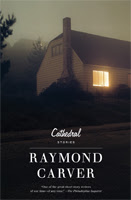
Away from Her (2007) by Alice Munro is a stand-alone republication of the short story "The Bear Came Over the Mountain" from her 2001 short story collection Hateship, Friendship, Courtship, Loveship, Marriage. (I read the full collection many years ago). The story was originally published in The New Yorker in 1999, and the magazine republished this early version of the story online in 2013 when Munro was awarded the Nobel Prize for Literature. In 2006, the story was adapted into a film called Away from Her by the actress and director Sarah Polley. The stand-alone printing of Away from Her was a tie-in with the film’s release, and it has a thoughtful introduction by Polley.
Away from Her is the story of Fiona and her husband Grant. They have been married for nearly 50 years. The story jumps back and forth in time, shedding light on their relationship. Fiona is suffering from Alzheimer’s disease, and she and Grant have decided it’s time for her to live in a facility called Meadowlake.
The story begins with Fiona’s romantic proposal to Grant on a beach at Port Stanley:
He took her up on it, he shouted yes. He wanted never to be away from her. She had the spark of life.
At first, their marriage seems ideal, but soon the reader learns that Grant was frequently unfaithful to Fiona during his years as a university professor. Strangely, Grant has convinced himself that Fiona never knew of his infidelity, but it’s clear to the reader that she was fully aware of his actions. For instance, Fiona would mimic the voices of women Grant had cheated on her with, women that Grant assumed Fiona had never met.
After Fiona is admitted to Meadowlake, Grant is asked not to visit his wife for 30 days to give her time to adjust to her new setting. When Grant finally visits his wife, she has forgotten him entirely. Fiona is now in a relationship with a man named Aubrey. This turn of events makes Grant an onlooker to his wife’s relationship with another man. Fiona treats Grant politely, as she would any stranger.
As time goes on, Grant wonders out loud if Fiona is playing a charade. Has Fiona really lost her memory? Or could this be a complicated act to make Grant experience what she went thorough? Grant may want to believe that it’s all a charade because coping with being forgotten is so much harder for him. In reading the story, I wondered about Fiona’s motivations. Is this Fiona’s way of punishing Grant and testing his devotion to her? Does Fiona want time away from Grant or time to forget him?
Like Fiona, Aubrey is married. One day, Aubrey’s wife Marian arrives and takes him home from Meadowlake. Fiona becomes sick with grief after Aubrey departs, and Grant worries about her declining health. Nothing he does seems to help.
Grant decides to ask Marian to bring Aubrey back to Meadowlake. After visiting Marian, Grant has the idea of pursuing Marian romantically as part of his plan to reunite his wife with Aubrey. When the story ends, Grant is visiting Fiona to tell her Aubrey will soon be returning, but surprisingly, Fiona now recognizes Grant as her husband. Fiona remarks that Grant could have just left and forsaken her, and he replies, "Not a chance."
The ending of the story is ambiguous. Did Fiona regain her memory of her husband temporarily, or was she acting all along? Will Grant be true to his wife, or will he abandon and forsake her?
Away from Her is a fantastic short story, and Munro is an incredible writer. Her characters are realistic, imperfect, and complex, and her stories always resonate with me and leave me thinking.
Purchase and read books by Alice Munro:



© penciledpage.com






















Search This Website